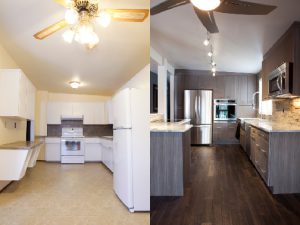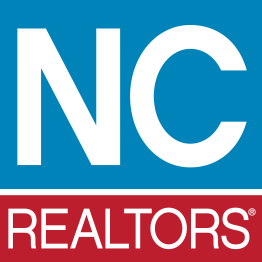Flipping Houses: A Race Against the Clock
We’ve all seen the popular house flipping shows on HGTV and, let’s be honest, they’re fun to watch. It’s hard not to root for those camera-friendly hosts as they stumble across unexpected costs and other mishaps, only to somehow (after an upbeat montage) pull it all together and walk away with huge profits.
According to RealtyTrac, homes flipped in 2016 sold for a median gross profit of $62,624. The profits are, in fact, huge and can be made — should be made — in a relatively short period of time, because in the business of flipping houses it’s a race against the clock. Here are the four basic stages in the house flipping process and how to cut down time in each one.
FINDING
In the magical land of HGTV, investors happen upon great investment opportunities as though it’s simply a matter of stepping outside and taking a walk. Unfortunately, it’s not that easy. Flipping houses on a regular basis takes looking at hundreds of properties in order to find a single profitable project. Investors can’t spend an hour evaluating every house on the market, so there’s a rule of thumb that the pros use when it comes to quickly identifying a good deal — it’s called the 70 percent rule.
Maximum Allowable Offer = (After Repair Value x .70) – Repair Cost
A property’s “After Repair Value” (AVR) is calculated by evaluating the sales price of similar fixed-up homes, also known as “comps,” preferably those that have been recently sold. Repair costs are proportional to the size of the property and the condition it’s in. Once the ARV and repair costs are figured out, then the investor can quickly decide whether or not the price tag justifies the investment.
Then there’s the issue of location. Steven Kopstein, New York REALTOR® and Associate Broker at Triplemint Real Estate, says he doesn’t search for properties further than 45 minutes away from where he lives. “You’ll be spending a lot of time on site, so you want to make sure the project is close enough to where you don’t have to spend too much time commuting.” He also takes into consideration how difficult or easy a town is to work with for getting permits. “The more regulations and restrictions there are on renovating,” he says, “the longer the project will take, and time is your biggest enemy.”
BUYING
The early bird gets the worm, but not if it doesn’t have money on hand. Homes that need major renovations usually don’t qualify for traditional mortgage financing. Cash is often needed up front, because home flippers can’t delay securing financing as investor offers typically have no more than 15-day inspection periods and no financing contingency.
If an investor doesn’t have cash on hand, they can opt for a “hard money” loan, which is simply a cash loan from a private individual or business. Lucas Machado is the president of House Heroes LLC, a real estate investment firm located in southern Florida. He has been involved in nearly one hundred real estate transactions in the past three years and knows a thing or two about cutting down on time. “Hard money lenders aren’t required to follow condition guidelines; unlike banks, these lenders don’t have to consider debt-to-income ratios or credit scores.”
There are, however, downsides to hard money loans. The loans are short-term (usually less than 12 months) and have high interest rates. A “partnership” is another strategy to use in order to make a quick purchase. This is when one partner supplies the entirety of the funding, while the other partner brings the deal and manages the operations.

When repairing and renovating a property, the kitchen is one of the best areas to focus on in order to add extra value and attract more buyers.
REPAIRS & RENOVATIONS
The profit is already set once the property has been purchased, and it begins to dwindle if the project is not completed on time. “Investors should develop a scope of work,” urges Machado, “outlining required repairs and estimated costs, and confirm it with their contractors.” Having a reliable, trustworthy contractor is essential to ensuring a timely flip. The online community called Bigger Pockets is a great place to get recommendations for contractors who work in your area. The site also has renovation calculators to help estimate the cost of renovations easily. When it comes to finding a solid contractor, Kopstein suggests showing up at the local hardware store at 5:30 a.m. “That’s when the early contractors who have their ‘stuff’ together will be there.”
As for renovations, cutting down on unnecessary repairs also saves time. While repairing or renovating certain areas of a property can add value and attract buyers, other areas aren’t necessarily as important to the ending ARV. When creating the scope of work, it’s best to focus on the following areas: kitchen, bathroom(s), roof, doors, paint, flooring and decks. Areas to hold off on are: garage, basement, added amenities, trim and driveway.
Over-the-top finishings, too, can take up unnecessary time. For instance, installing elaborate kitchen cabinets when a quick paint job on the originals will do the trick or installing ornate tiled backsplashes when laminates would look just as good, can add weeks to the renovation timeframe. The level of finishing will depend on the location and the surrounding comps, and shouldn’t be overdone if it doesn’t need to be.
SELLING
Marketing the property for sale should begin as soon as the renovations and repairs are done. In a seller’s market, good marketing can bring in higher offers; in a buyer’s market, it can be the difference between making a sale and sitting on the market. In either case, if the phone doesn’t ring, the property doesn’t sell and the profits begin to dwindle as the clock hand keeps ticking.
Listing the property with a REALTOR® and placing it in ads will certainly make for a quicker sale, but there are other additional strategies to use as well. Staging a home, both inside and out, can attract more buyers and get a property sold quicker. In 2016, the National Association of REALTORS® reported that 62 percent of sellers’ agents indicated staging a home decreased the amount of time in spent on the market. Considering the relatively low costs, home staging is a worthwhile investment.
Attraction (and profitability) is also increased with professional photography. When taking pictures of the front, shoot up close with angled photos, and make sure to take advantage of the sunlight. For interior shots, open blinds and drapes and turn on lights. Creating a 360-degree virtual tour is also a great way to appeal to more buyers, and can be accomplished by using smartphone apps such as Vieweet and Google Camera. Beautiful pictures and imagery of the interior and exterior drives more prospective home buyers to showings, ultimately reducing the number of days spent on the market.
It’s a seller’s market out there, and for Tar Heel house flippers there’s more good news. Greensboro, North Carolina, has been voted No. 9 in WalletHub’s 2017 best cities to flip houses in. What’s more, Winston-Salem, Raleigh, Durham and Charlotte all ranked within the top 60 out of 150 of the most populated U.S. cities. The analysis was conducted according to three factors: house-flipping market potential, renovation costs and quality of life. Sounds like it’s the perfect time to set your stopwatch and go make some money!


